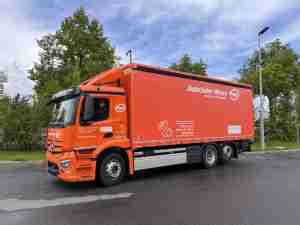Gaps exist between vessel arrival and delivery reliability
With an average of 900,000-1,000,000 container status messages processed daily supporting transactions that represent over 18% of the world's total container shipments, INTTRA's data provides visibility into the most comprehensive on-time performance measurements. The results of trade lane analysis, which compared vessel arrival reliability based on SeaIntel's measurements with the actual container delivery reliability based on INTTRA's data, identified a significant gap between these performance measures.
'For the first time shippers can now analyze actual container delivery time versus vessel arrival time on a country-by-country level,' said Lars Jensen, CEO of SeaIntel Maritime. 'This is a game changer in how shippers can evaluate carrier performance and make more informed decisions on how their freight is moved. While knowing when the vessel arrives is an indicator of on-time arrival, what's most important to a shipper is how timely their cargo is moving. With this report, shippers now have timely information, at a level of detail that makes it actionable.'
The Asia to Europe and Asia to North America trades are both characterized by the container delivery being 8-10 percentage points lower than the vessel reliability. However, the highest variability is seen from Europe to Australia/New Zealand where vessel reliability on the direct service is 88%, but container delivery is only 36%, a variance of 52 percentage points.
'The tendency is to look exclusively at the carriers when discussing shipping performance reliability,' said Ken Bloom, CEO of INTTRA. 'The information captured through INTTRA enhances performance conversations and can be used to identify more precisely where improvements may need to be made. We hope that by providing the industry with consistent, easily accessible and reliable performance information, we will be able to solve reliability challenges and begin to work on other industry improvements.'
On-time delivery metrics provide optics into improved trade lane performance
The report findings also indicate positive improvements in overall on-time performance for the ocean shipping industry. Global on-time delivery in June improved to 64% from 61% in May. Looking at specific, critical trade lanes, the story is even better. Asia to Europe on-time delivery rose from 65% in 2011 to 74% in 2012. During that same period, in the Asia to Mediterranean trade, performance increased from 46% in 2011 to 68% in 2012.
The analysis of the on-time delivery on the direct services from China to various European countries revealed a strong correlation in the number of direct services and on-time performance. In markets where there are more direct services the performance in on-time container delivery for all participants is higher.
Advanced insight provides opportunity to drive down carrier costs
'For the carriers, having access to this insight provides an immediate benefit by enabling them to see performance information from the perspective of the customer and to leverage it to continue to improve service delivery,' continued Ken Bloom. 'As reliability improves, not only can the carriers improve their servic









